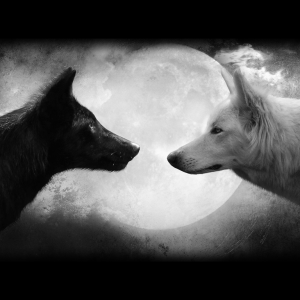I’ve talked previously about the inspirations for my vampire novel series, The Matriarch Vampires. The central West Virginia locations, Glenville State College, and the character nods. After shelving the original first drafts of the book two decades earlier, why did I feel it was time to dust them off and finally finish the story?
One of those reasons was certainly Jonathan Weiss.
 My wife and I enjoy walking through old cemeteries and taking local ghost tours. There are many haunted places around the U.S., often in old cities like Birmingham, Alabama, Savannah, Georgia, and St. Augustine, Florida. Back in 2010, we traveled to New Orleans and took such a tour, and our guide to the city at night was none other than Jonathan. He looked the way I imagine a time traveler might, combining a classic appearance with a modern sensibility, a person whom has long since reconciled the old and new ways with a natural ease, elegance, and an eagerness to share his experience.
My wife and I enjoy walking through old cemeteries and taking local ghost tours. There are many haunted places around the U.S., often in old cities like Birmingham, Alabama, Savannah, Georgia, and St. Augustine, Florida. Back in 2010, we traveled to New Orleans and took such a tour, and our guide to the city at night was none other than Jonathan. He looked the way I imagine a time traveler might, combining a classic appearance with a modern sensibility, a person whom has long since reconciled the old and new ways with a natural ease, elegance, and an eagerness to share his experience.
Not having given much serious thought about fiction writing for twenty odd years, Mr. Weiss captured my attention and filled my imagination with stories and embellishments as we toured the French Quarter and Bourbon Street, recounting local legends with intriguing details and playing to the crowd… and yes, much was said about vampires. He and other occupants felt like a necessary part of the city, a piece of its soul that would be lost forever if abruptly cut out.
Yet, as I understand it, that’s exactly what some are trying to do.
Continue reading “Local Color and Vampire Inspiration: The Big Easy”

 On the next full moon, the wolf returned. When the herd scattered, the spared sheep did not run.
On the next full moon, the wolf returned. When the herd scattered, the spared sheep did not run. In Hollywood, there has long existed a trope of “the helpful Indian who appears from nowhere,” so clearly they must be magical. Think Peter Pan and The Lone Ranger; help is needed, the indigenous mystics appear, do their thing, then conveniently disappear. It’s a plot device: deus ex shamana. Like faeries, trolls, and goblins, the truth can be lost to legend. Using Britain’s own fables as an example, there were reportedly a dozen Robin Hoods who all became one man, and King Arthur’s stories can be traced to several individuals who were embellishment through oral tradition.
In Hollywood, there has long existed a trope of “the helpful Indian who appears from nowhere,” so clearly they must be magical. Think Peter Pan and The Lone Ranger; help is needed, the indigenous mystics appear, do their thing, then conveniently disappear. It’s a plot device: deus ex shamana. Like faeries, trolls, and goblins, the truth can be lost to legend. Using Britain’s own fables as an example, there were reportedly a dozen Robin Hoods who all became one man, and King Arthur’s stories can be traced to several individuals who were embellishment through oral tradition.
 As any career writer will tell you, there is a degree of luck involved to being discovered and becoming popular or recommended, but a body of existing work is the best way to not only become successful but to be ready for it. But I offer a counterpoint for the writer who has already written:
As any career writer will tell you, there is a degree of luck involved to being discovered and becoming popular or recommended, but a body of existing work is the best way to not only become successful but to be ready for it. But I offer a counterpoint for the writer who has already written:


 Now that
Now that 


